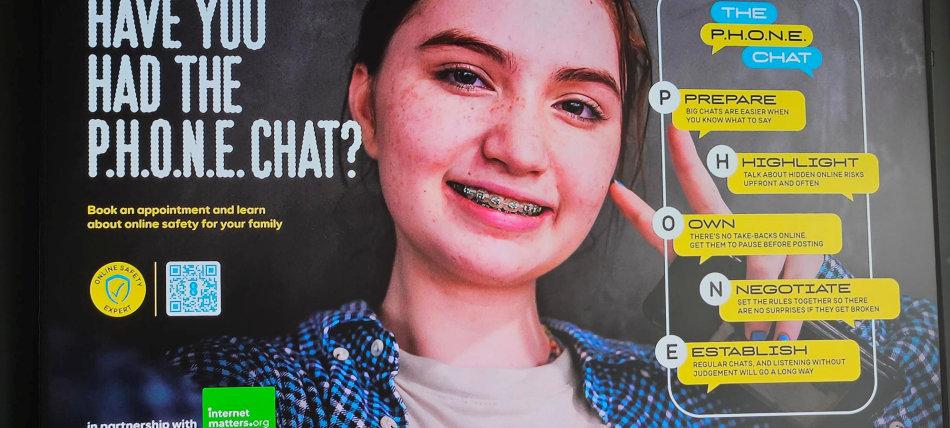
EE Addresses Online Safety Concerns with New Phone Plans for Kids
There’s been a lot of debate recently about smartphone ownership and internet access by children. It’s a tricky and contentious subject — opinions inevitably vary and there’s no one-size-fits-all solution. Netflix’s hard-hitting series Adolescence has further elevated an already complex discussion that affects parents, children, schools, government, regulators, content providers, telecom operators, charities and more.
In an attempt to address the topic, EE today launched a series of phone plans for under-18s and a range of support tools for families. They were first unveiled by CEO Claire Gilles at an event for the media in London a fortnight ago. The idea is to help parents make more confident choices, best suited to their individual circumstances and those of their children.
As the parent of an 11-year-old who recently received his first smartphone and who starts secondary school next month, I come to this topic with a personal as well as a professional interest, so I was grateful for the opportunity to attend the EE event.
EE’s Safer SIM plans begin at £7 per month. There are three tariffs on offer, with varying levels of protection, targeted at different stages of young people’s lives. The first, called Protected, is aimed at early secondary school years, and comes with strict content controls for websites and reduced speeds to limit streaming (just 0.5 Mbps). The Guided and Trusted plans, aimed at teenagers, have moderate content controls and offer more data and faster speeds.
All plans include scam call protection, data gifting and EE’s Stay Connected promise, which enables access to certain “essential” apps like WhatsApp, maps and email even after a data allowance has been used up.
From today, EE is also offering online safety appointments at over 400 retail stores, in partnership with the charity Internet Matters. Families can book a 30-mintue slot for personalized support and practical guidance, covering topics like parental controls, screen time and online security.
In another move, EE has developed an online content resource called The P.H.O.N.E Chat, again working with Internet Matters, to help parents navigate conversations with children about owning a phone.
I particularly like the idea of offering consultations and encouraging discussion. Each family’s situation is different and the thresholds at which they’re willing to allow technology into their lives can vary drastically.
I’ve always believed that technology is a force for good and while I’m keen to set clear boundaries for my children, I’ve also seen how it has supported their learning and independence. As with many things, it’s about achieving a delicate balance.
For me, one of the main lessons from the event is that conversations should constantly evolve: children get older, technology moves on, new content becomes available and circumstances change — think school policies, friendship groups and so on. Involving children in the discussions and encouraging an open and honest dialogue is probably the best path to minimizing the risk of harm.
In a panel discussion at the EE event, there was broad consensus that guidelines can be a more effective tool than outright bans. A blanket approach may encourage everyone to play by the same rules, but it doesn’t allow for variance in people’s circumstances.
Late last year, I was surprised to see Australia became the first country to move toward a ban on social media for under-16s. This felt like a draconian move, and one I don’t feel really addresses underlying issues. The legislation would be hard to enforce — techy-savvy kids will find workarounds, and there’s a real danger some children would end up at riskier places on the web that aren’t protected. Carolyn Bunting, CEO of Internet Matters, agreed, arguing that prohibition can reduce the incentive for technology companies to create safe spaces.
More recently, Peter Kyle, the UK Secretary of State for Science, Innovation and Technology, said the government is considering implementing a two-hour cap to tackle “compulsive” screen time among children. A formal announcement is expected in the autumn. I’ll be interested to see the details, but I fear a blanket approach may not be the most effective course of action.
I applaud EE for tackling this sensitive issue and encouraging open discussion. As the enablers of connectivity, operators have a responsibility to respond to concerns about screen time, online safety and how using digital devices can affect a child’s well-being. Today’s launch follows EE’s decision last year to set out a position that advises against giving a smartphone to children under 11. I hope to see other operators follow EE’s strong lead with their own initiatives and guidelines.
But there’s never going to be a “silver bullet”, either. It’s important to be aware that EE’s Safer SIM controls only work when connecting to a mobile network. This is a major drawback, particularly for younger children that probably spend the largest share of their online time in the home, using a broadband connection. This group is also more likely to use devices other than mobiles, such as a tablet or PC. EE does offer parental controls for broadband too, but it’s clear that only a combination of tools, guidance and advice will bring the most effective results.
As one panellist rightly remarked: “it takes village to raise a child”. Online safety and well-being should be considered a shared responsibility for parents, children, schools, government and other bodies. It’s encouraging to see EE stepping up and I’ll be following its new initiatives with interest.
 LinkedIn
LinkedIn
 Email
Email
 Facebook
Facebook
 X
X